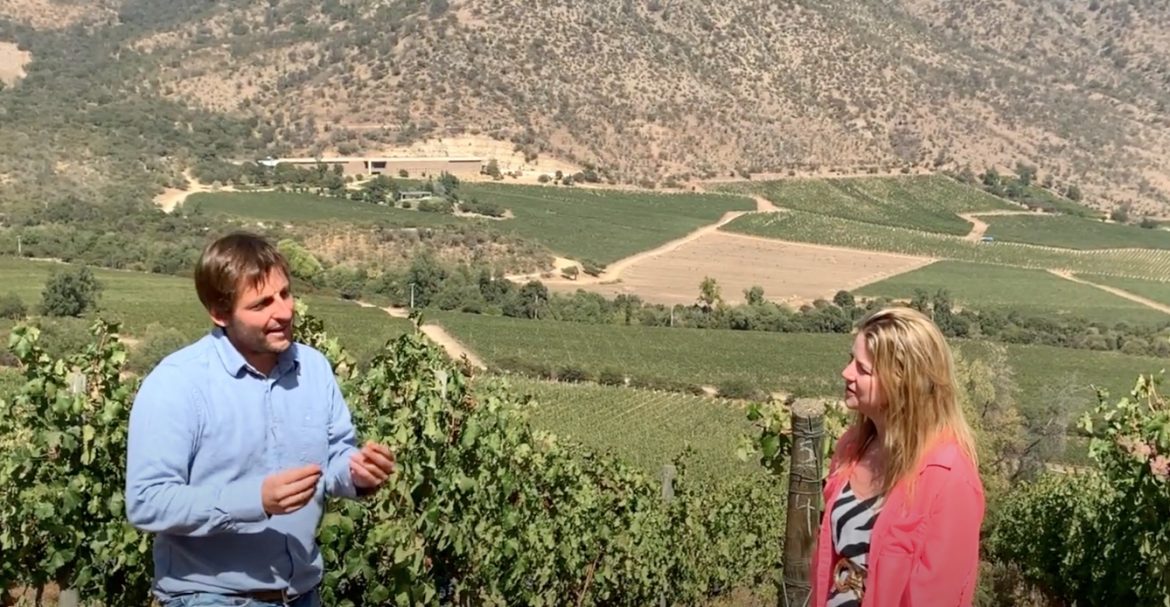Cachapoal Andes is the mountainous region of Cachapoal where the prized vineyards of Altaïr and Cabo de Hornos are located. Winemaker Gabriel Mustakis shares his insight into the terroir here, talking us through the climate, soils and growing conditions for his Cabernet Sauvignon and other red Bordeaux grape varieties.
We learn why Cachapoal Andes has helped to develop two of the most iconic wines of Chile within one vineyard, but with very different concepts.
Exploring Altair winery & Cachapoal Andes terroir with winemaker Gabriel Mustakis
Video highlights: Amanda Barnes interviews Altaïr winemaker Gabriel Mustakis
Gabriel, we are overlooking Altair terroir. Can you tell me about the diversity of the vineyard and the different soils and altitudes?
You can see how diverse the geography is here. In the middle of the property, we have a creek that has water running the whole year.
We have different kinds of soils, they are mainly colluvial on the slopes and we have these rocks that roll from the Andes and deposit in the middle of the property, which in turn mix with the colluvial soil. So we have many different parcels that give us a big diversity in terms of texture and the profile of the wines. With this amphitheater of vineyards, we can select the parcels and make our three icon wines: Altair, Cabo de Hornos and Sideral.
So you have the colluvial soils up towards the winery and where are the alluvial soils?
The colluvial soil is mainly in the slopes so Altair comes from those slopes as the texture is more elegant, thinner in the mid-palate and very long and elegant. Along the sides of the creek, you have the alluvial soil so we have some vineyards that have more gravels and sandy soils and these give us more textured wines and more mid-palate, and these vines are used for Cabo de Hornos. For Sideral, we use a mix of the colluvial and alluvial soils that give us a different texture and volume. It is a very good wine to introduce Cachapoal Andes for people to understand how this place is.
And how would you say that Cachapoal Andes is different from Maipo Andes and Colchagua Andes?
Here you get your own diversity and this makes a big difference. In Cachapoal we get two things that we think are very important. First of all, the diversity of rocks in the alluvial and the colluvial soil. These give us in our Cabernet Sauvignon wine a very fresh and rocky character.
Cachapoal is a valley in the middle of Maipo and Colchagua and in the middle of the Andes Mountains and the coastal range so we have a big diversity in terms of soil and exposition. It is truly a very complex spot.
Read more about Altäir winery in our winery guide online!
Want to know more about the
wine regions of Chile?
ORDER YOUR COPY of The South America Wine Guide now!
E-book AVAILABLE ONLINE too.
Interested in watching more videos?
Video guide to Maule & Itata wine regions in Chile
Suelo Invertido – turning vineyard soil upside down with Santiago Deicas
Exploring sulphite-free Malbec with Domaine Bousquet
Championing growers & sustainability: Miguel Torres Titanes del Vino

